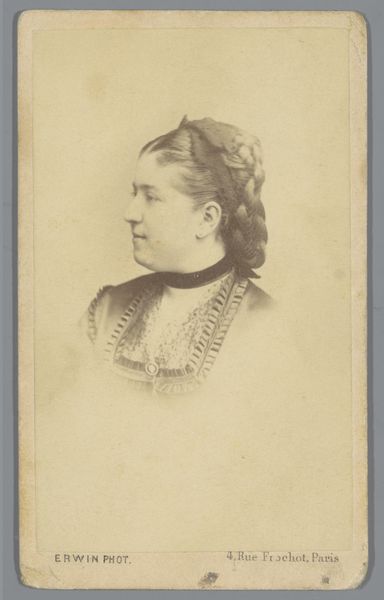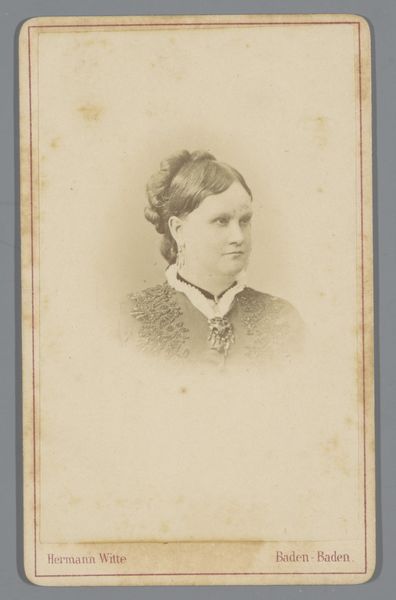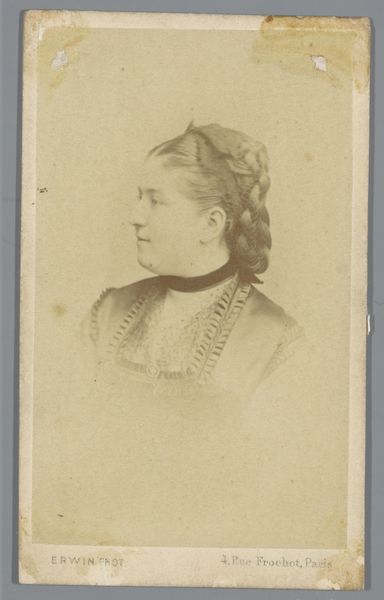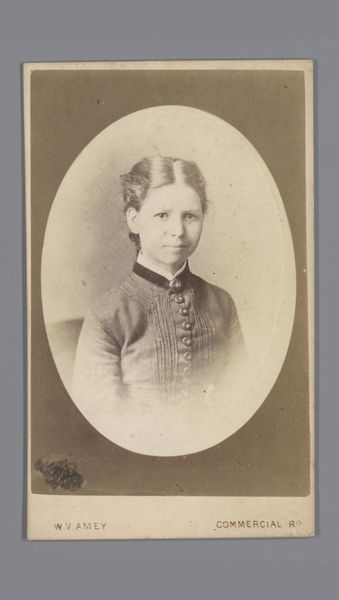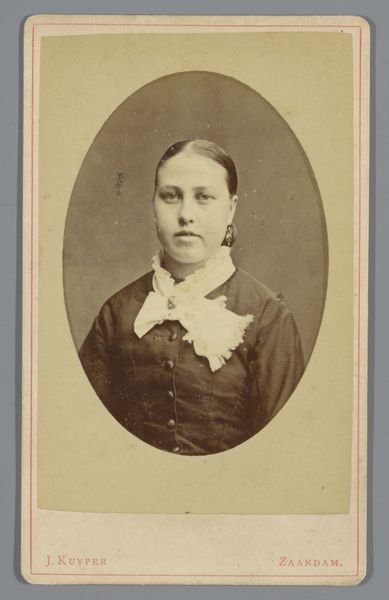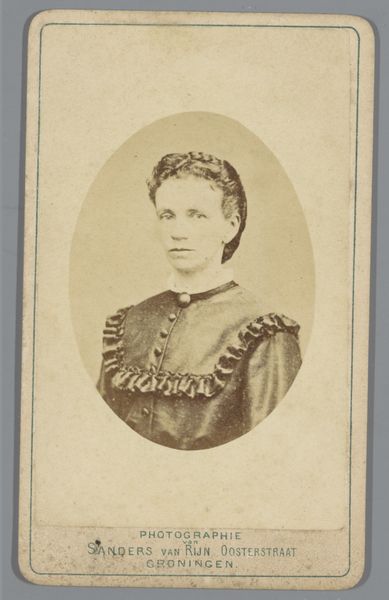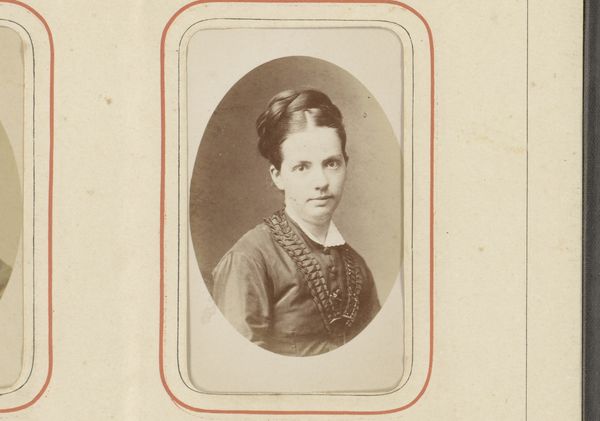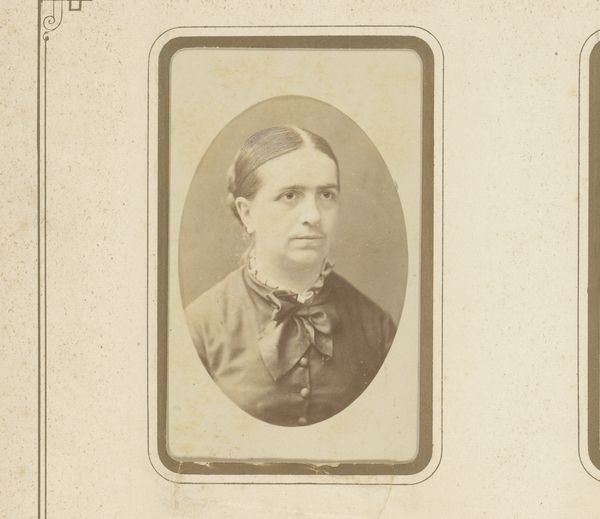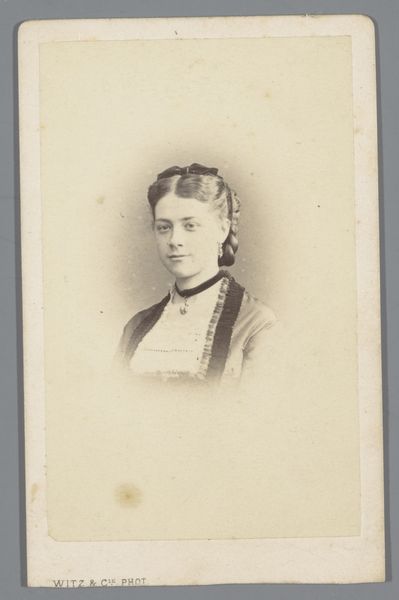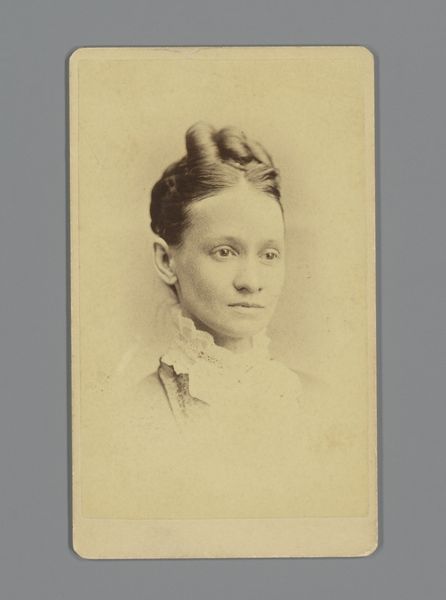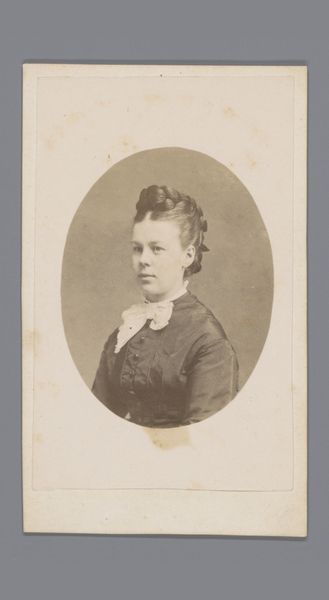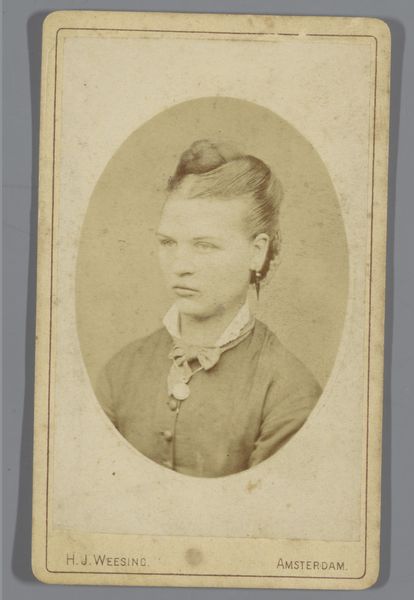
photography, gelatin-silver-print
#
portrait
#
photography
#
gelatin-silver-print
Dimensions: height 104 mm, width 65 mm
Copyright: Rijks Museum: Open Domain
Editor: Here we have Albert Greiner's "Portrait of an Unknown Woman," a gelatin silver print made sometime between 1861 and 1874, housed in the Rijksmuseum. The woman’s expression is so neutral, almost defiant. What does this image tell us about the society it was created in? Curator: Well, the carte-de-visite format of this photograph was incredibly popular then. Photography had become increasingly accessible, yet portraiture remained a deliberate act of self-presentation. What's compelling here is the anonymity of the sitter combined with the formality of the portrait. It prompts questions about the democratization of image-making and who had access to representation. Do you see any other details that might suggest something about the sitter's social position? Editor: I notice the lace collar and the way her hair is styled. Would those details indicate a certain level of social standing? Curator: Exactly. While not ostentatious, those small markers would signify a specific aspiration, a desire to participate in the visual culture of the time. Photography allowed people to craft an identity and circulate it within their social networks, shaping and reinforcing social hierarchies, even for someone "unknown" to us now. And isn't it striking how that tension between the personal and the public plays out even today in social media? Editor: So even a seemingly straightforward portrait becomes a record of social aspirations and the power dynamics embedded in visual representation. Curator: Precisely! It is a great way to contextualize art’s role in shaping our cultural perceptions, as an agent in that process. Editor: I never thought of photography quite that way before; this has opened a new understanding. Curator: That's the exciting part of art history – to view art, reflect, and contextualize it with time and different perspectives.
Comments
No comments
Be the first to comment and join the conversation on the ultimate creative platform.
